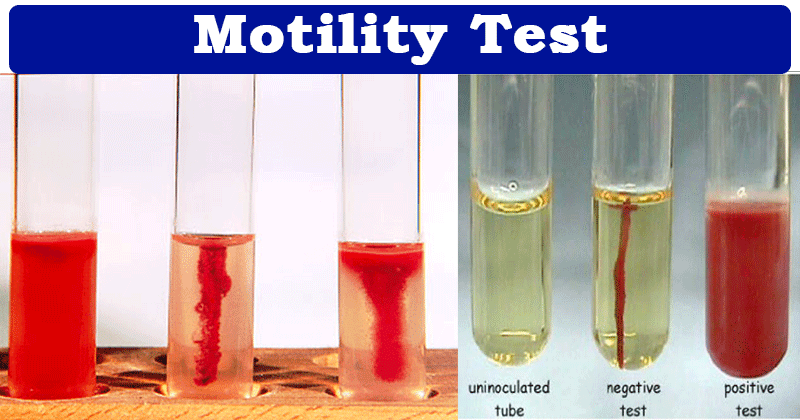Interesting Science Videos
Objectives of Motility Test
- To determine the motility of bacterium.
- To differentiate between motile and non motile bacteria.
Principle of Motility Test
Motility is the ability of an organism to move by itself by means of propeller-like flagella unique to bacteria or by special fibrils that produce a gliding form of motility. Motile bacteria move using flagella, thread-like locomotor appendages extending outward from the plasma membrane and cell wall either single flagellum or multiple flagella. Each flagellum has a very rigid, helical structure, and actual motility results from the rotation of the flagellum in a manner similar to that of a boat propeller. Motility by the bacterium is demonstrated in a semi-solid agar medium. The medium mainly used for this purpose is SIM medium (Sulphide Indole Motility medium) which is a combination differential medium that tests three different parameters, Sulfur Reduction, Indole Production, and Motility. This media has a very soft consistency that allows motile bacteria to migrate readily through them causing cloudiness. The inoculum is stabbed into the center of a semisolid agar deep using a sterile inoculating needle. Bacterial motility is evident by a diffuse zone of growth extending out from the line of inoculation. Some organisms grow throughout the entire medium, whereas others show small areas or nodules that grow out from the line of inoculation. The non-motile bacteria will only grow in the soft agar tube and only the area where they are inoculated.
Media Used in Motility Test
SIM Medium
Composition per liter:
Pancreatic digest of casein…………………………..20.0g
Peptic digest of animal tissue………………………..6.1g
Agar…………………………………………………………..3.5g
Fe(NH4)2(SO4)2·6H2O………………………………….0.2g
Na2S2O3·5H2O…………………………………………….0.2g
pH 7.3 ± 0.2 at 25°C
Procedure of Motility Test
- With a sterile straight needle, touch a colony of a young (18 to 24 hour) culture growing on agar medium.
- Single stab down the center of the tube to about half the depth of the medium.
- Incubate at 35°-37°C and examine daily for up to 7 days.
Result Interpretation of Motility Test

Motile: organisms will spread out into the medium from the site of inoculation, diffuse zone
Non-motile: organisms remain at the site of inoculation
Limitation of Motility Test
Some organisms will not display sufficient growth in this medium to make an accurate determination, and additional follow-up testing is required.
Quality Control of Motility Test
Positive: Escherichia coli (ATCC25922)
Negative: Staphylococcus aureus (ATCC25923)
References
- Tille P.M. 2014. Bailey and Scott’s diagnostic microbiology. Thirteen edition. Mosby, Inc., an affiliate of Elsevier Inc. 3251 Riverport Lane. St. Louis. Missouri 63043
- Pelczar MJ, Chan E.C.S, Krieg NR. 1958. Microbiology. Tata McGraw Hill Education Private Limited. 7 West Patel Nagar. New Delhi 110 008.

I like it
Result is positive, but this organism is obligate aerobic.
Some times growth is present on the upper side of tube but whole tube is not turbid..result will be positive or negtive ?